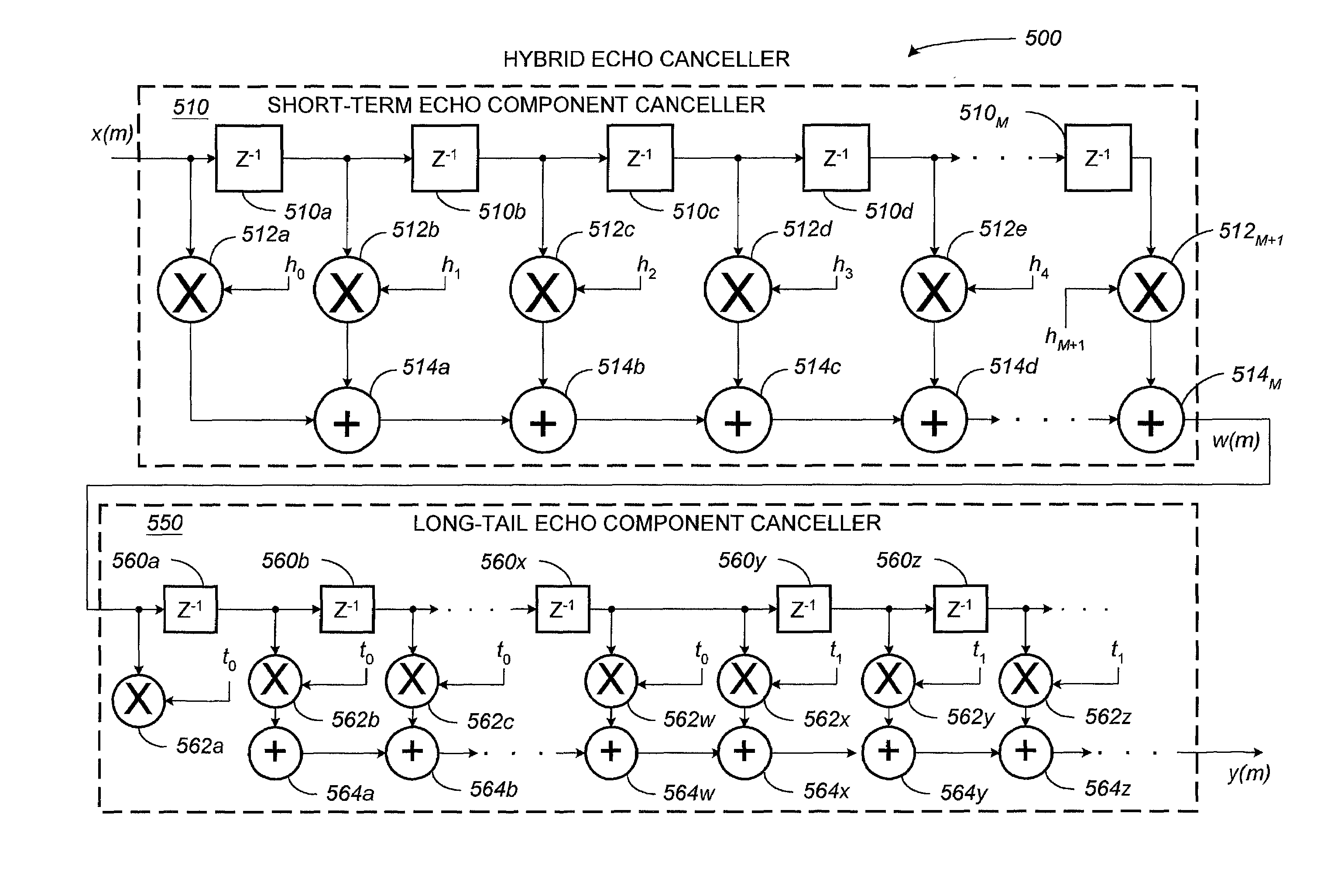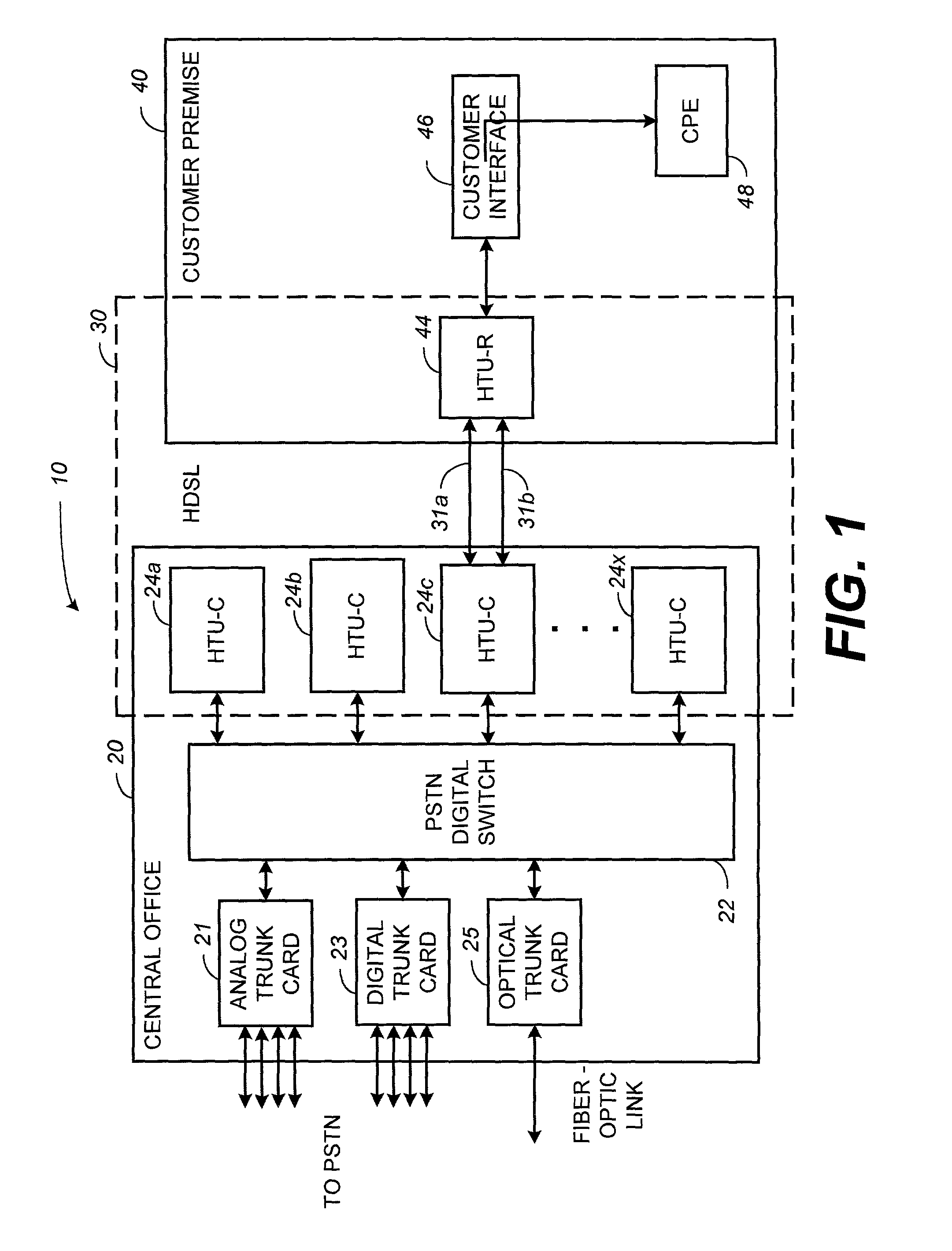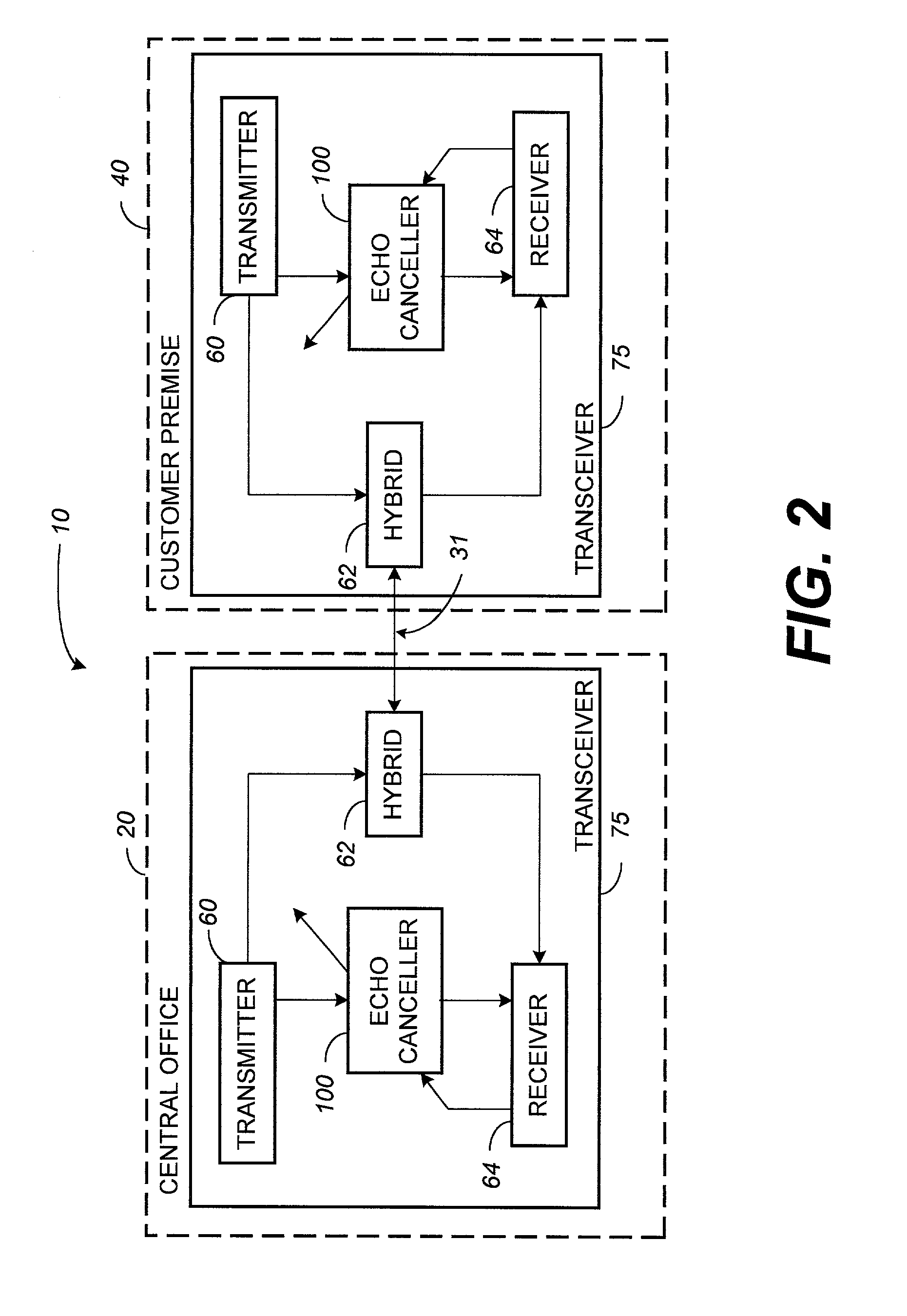Hybrid echo canceller
a canceller and hybrid technology, applied in the field of data communication, can solve the problems of ineffective echo suppressors, affecting the effect of double-talk, and complicated situations, and achieve the effect of reducing computation and signal processing resources, and effective filtering length of x taps
- Summary
- Abstract
- Description
- Claims
- Application Information
AI Technical Summary
Benefits of technology
Problems solved by technology
Method used
Image
Examples
Embodiment Construction
[0025]Having summarized the invention above, reference is now made in detail to the description of the hybrid echo canceller as illustrated in the drawings. While the hybrid echo canceller will be described in connection with these drawings, there is no intent to limit it to the embodiment or embodiments disclosed therein. On the contrary, the intent is to cover all alternatives, modifications and equivalents included within the spirit and scope defined by the appended claims.
[0026]The hybrid echo canceller can be implemented in software, hardware, firmware, or a combination thereof. In the preferred embodiment, the elements of the hybrid echo canceller are implemented in hardware within the various circuit components of an application specific integrated circuit (ASIC) such as a suitably configured digital signal processor (DSP). In an alternative embodiment, a hybrid echo canceller may be implemented in software that is stored in a memory and that configures and drives a suitable ...
PUM
 Login to View More
Login to View More Abstract
Description
Claims
Application Information
 Login to View More
Login to View More - R&D
- Intellectual Property
- Life Sciences
- Materials
- Tech Scout
- Unparalleled Data Quality
- Higher Quality Content
- 60% Fewer Hallucinations
Browse by: Latest US Patents, China's latest patents, Technical Efficacy Thesaurus, Application Domain, Technology Topic, Popular Technical Reports.
© 2025 PatSnap. All rights reserved.Legal|Privacy policy|Modern Slavery Act Transparency Statement|Sitemap|About US| Contact US: help@patsnap.com



